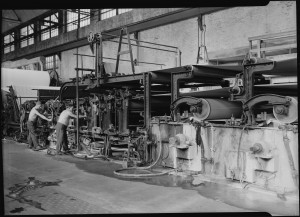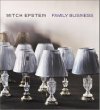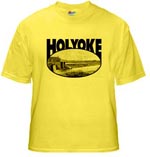by Laurel | January 2nd, 2014
02 January 1927
History of American Writing Paper Company and Its Difficulties
Incidents About Its Organization
Able Men in the Concern — Outlook Good at Present — Absorption of the Telegram
Holyoke, January 1 — The closing days of the 19th century in Holyoke were noteworthy for the formation of one of those gigantic combinations known as “trusts” at the time, in the shape of the American Writing Paper Company, with a capitalization of $12,000,000 in stocks and bonds and the absorption into it of the larger part of the Holyoke paper mills — 17 in all. For some time before the organization was announced it had become known that it was being effected an there was for a long time an impenetrable mask of secrecy about it. Those “in the know” were evidently cautioned not to talk, and all the while the work was being conducted quietly. It was later learned that the focus of operations was at the Riverside Paper Mills, owned by Julius H. Appleton and others. Many competent men in the paper manufacturing industry saw in this combination a greater future for the Holyoke paper-making world than had ever been known. One paper manufacturer said openly that inside of a year or so the common stock of the company would be around 100. It was nearly that with the figures reversed; which reminds one of a story said to be true that a few years later a heavy inventor in common and preferred stock of the company told a friend that he was papering his “den.” “With what color?” was asked. “Plain white,” he said, “common stock of the American Writing Paper Company.”
Hoped William Whiting Would Go In
Early in the game the promoters approached Congressman William Whiting of the Whiting Paper Company, as they were anxious to have the three large mills be controlled in the combine. His answer was that he would go in if he was satisfied. The agreement was drawn, if the writer’s recollection is correct, by Richard Olney. But Congressman Whiting was not satisfied with the way the trust was being formed; and the more he found out about it the more dissatisfied he got. He finally asked a friend about it and was advised to have a conference with Solomon B. Griffin, managing editor of The Republican. The two men talked the matter over and evidently Mr. Griffin convinced the congressman that it was important that his position should be made known. At any rate soon after The Republican made official announcement that the Whiting Mills would not be included in the combine.
This was a severe blow to the promoters, who had figured on having Mr. Whiting as president of the concern and his name and his mills as trump cards in their suit. “That will break up the combines,” one man declared the next day; but it did not go quite as far as that. When the list was finally announced it was found that the Whiting Paper Company as well as the mills across the river in South Hadley Falls were outside. And they made a lot more money than they had done before. This story illustrates the remarkable ability and clear headedness that Congressman Whiting had in business matters. one day W. B. Plunkett of Adams came down to Holyoke all afire over the prospects of the ill-fated White Mountain Paper Company. But Congressman Whiting failed to enthuse, to Mr. Plunkett’s great disappointment; and subsequent events, including the failure of the big plant, amply justified the congressman’s position. He explained his lukewarmness as due to the lack of concrete facts. “They had not figured out in detail the cost of making the paper,” he said.
The late James H. Newton lamented the fact that the promoters would not take the Norman Paper Mill off his hands without including the Wauregan Paper Mill. The former was costing money for him about as fast ass the Wauregan was making it. The Wauregan was a little gold mine as a matter of fact, still is for that matter. So he sold both mills and devoted his attention to the Chemical Paper Mill later selling that to the Crocker-McElwain people.
Able Men Were Officials
The new organization started off with some remarkably able men in its official life. For General Superintendents James W. Toole and William Reardon were unsurpassed at that day and it is to be doubted if they have been equaled since. Mr. Reardon had charge of the book paper mills — course mills they were then termed, and Mr. Toole of the fine writing mills. They used to ask for “Reardon’s papers” as far West as the Pacific coast. Mr. Toole also held control of many valuable clients through personal friendships, as with the later Senator W. Murray Crane. H. Dwight Bradburn was another skilled man. The first president, Elisha Morgan, did not remain at the head of the combine very long. He was succeeded by W. N. Caldwell, who sat on the safety valve for nearly 13 long weeks of the biggest paper mill strike in Holyoke’s history. The mills won, but it was a costly victory — some say it cost them a cool million besides the loss of many customers who were never regained. That happened in this way: Some customers who had been used to buying all rag paper found that they could get along on paper made largely from wood pulp and never went back to the rag papers. Probably the increased use of the typewrite also had its part in this decision.
C. A. Croker a Loss to Company
Clifton A. Crocker was another distinct loss to the American Writing Paper Company. He had been head of the Crocker Paper Company. He was put in charge of maintenance, but his idea od what should be done to make the big concern a success were widely at variance wit those that controlled it. It is not too much to say that the big company would have succeeded far better had his ideas prevailed. “What was really needed to make the company a success,” said an old paper manufacturer to the writer a few years ago, “was the placing at its head a man trained in economic operation. There were papermakers enough in it. A live young man with experience as active vice-president of a railroad, for instance, would have worked well.” The present head of the company arrived as the concern was drifting on the rocks. His business was to save as much of the wreck as possible and it is generally agreed that he had done this. Could he have arrived at the beginning there might have been a different story to tell. The year 1927 opens with brighter hopes of better business for the big company than every before. The water has been pumped out of the craft, it is to be reunited with financial spars and sals and bids fair to make more prosperous voyages n the days to come.
From The Springfield Republican
Image from Wiki Commons.









